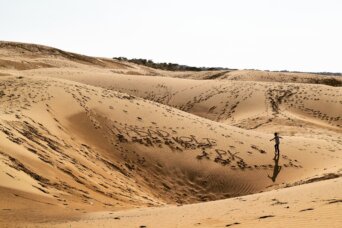- About
- Topics
- Picks
- Audio
- Story
- In-Depth
- Opinion
- News
- Donate
- Signup for our newsletterOur Editors' Best Picks.Send
Read, Debate: Engage.
| topic: | Climate Change |
|---|---|
| located: | Pakistan |
| editor: | Shadi Khan Saif |
At this time of year, nature usually provides an exceptional opportunity for water-starved Pakistan to make the most of abundant rainfall.
The region of Thar in the south of Pakistan is a classic example of misplaced priorities by the government, where a famine-like situation hits every other year. But, at this time of year, it receives an abundance of rain that is seldom used to at least lift the underground water table. The culture of water conservation is far from taking roots in the country of over 200 million citizens.
The paradox of the matter is that many of the privileged urban class tour Thar during the monsoon rain season to enjoy scenic beauty, lush green patches of land and peacocks dancing thanks to the rain. And, the same people view miseries of the Thar residents on their television screens when a famine-like situation amid drought kills dozens of children on a daily basis. Yet there is no soul-searching or calls for tangible solutions, and the vicious cycle continues.
With little effort, generally responsible planning and cautious approach, the rainwater could be used and stored for difficult times for the most vulnerable later in the year.
Most vulnerable to droughts in the remote southern parts of the country bordering India have long been yearning for such attention from the ruling quarters. But, all they get is the usual photo sessions of lavishly dressed officials distributing charity among victims of the drought after the calamity rather than responsible officials rolling up their sleeves to address their miseries for good.
The Global Climate Risk Index by the Germanwatch has ranked Pakistan among the worst affected, with a death toll of over 500 lives per year, coming to 10,462 lives lost in 20 years and economic losses worth $ 3.8 billion, equivalent to 0.605 per cent of the GDP in a 20 year period. Yet, serious debates to tackle the emission of greenhouse gasses and climate conservation at large remain out of the public and private discourse.
The government and corporate circles seem more focused on tapping into the 175 billion tons of coal over 9,000 square kilometres in Thar. Pakistan needs to look to Jordan, Peru and Brazil to learn a lesson or two on promoting forestation and avoiding getting their hands dirty with coal when there is huge potential for the clean energy.
Image by Priyanka Choudhary

